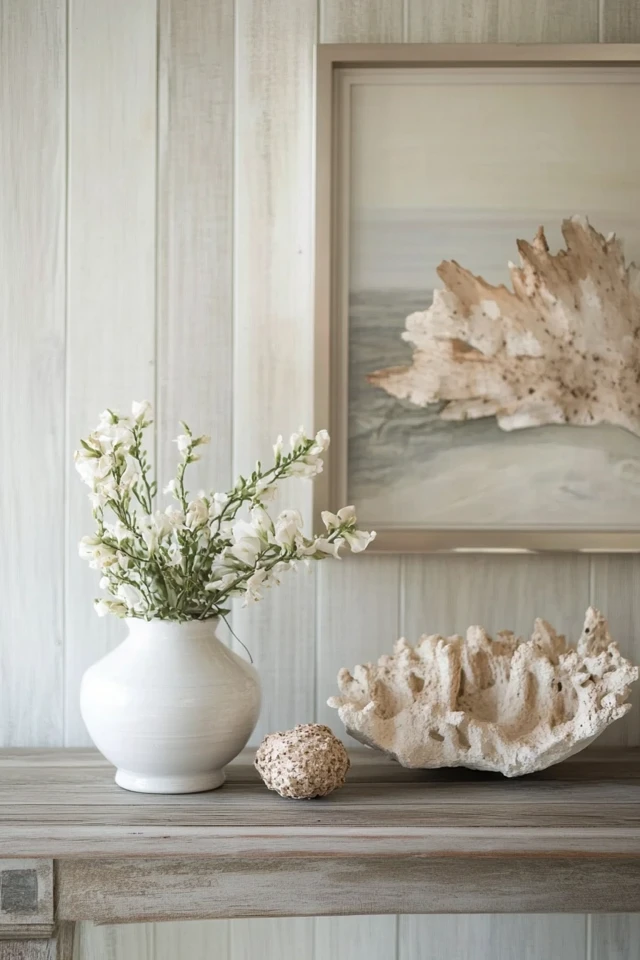Introduction
Coastal-inspired design is beloved for its light, breezy aesthetic, but what truly brings it to life is the use of texture. Layering textures adds depth, dimension, and visual interest to your space, transforming a flat design into one that feels rich and inviting. Whether it’s the roughness of driftwood, the softness of linen, or the intricate weave of a jute rug, coastal design uses natural materials and thoughtful details to create a look that’s as dynamic as it is serene.
My first experience with layering textures came when I was redecorating my living room. I had the right color palette – soft blues, whites, and sandy beiges – but the space still felt flat and uninspiring. The moment I added a chunky knit throw, a seagrass ottoman, and a woven basket for storage, the room came alive. It felt warm, cozy, and layered – the way a coastal retreat should. That’s when I realized that texture is the secret ingredient to making coastal spaces feel effortless yet complete.
If you’re looking to take your coastal design to the next level, these 10 ideas will show you how to use textures to create depth and dimension in your space. From furniture to decor, every detail can contribute to a layered, inviting atmosphere that feels like a true seaside escape.
The Perfect Design for You
Using textures in coastal design is ideal for anyone who wants to create a space that feels dynamic, cozy, and connected to nature. It’s perfect for living rooms, bedrooms, and even outdoor spaces, as it combines the calming vibes of the coast with the warmth of layered materials.
Picture a bedroom with a linen duvet, a chunky knit throw at the foot of the bed, and a soft wool rug underfoot. Or imagine a living room with a wicker coffee table, a rattan pendant light, and smooth ceramic vases as decor. Textures bring the subtle elements of coastal living into your home, adding depth and richness without overwhelming the space.
Picture Gallery
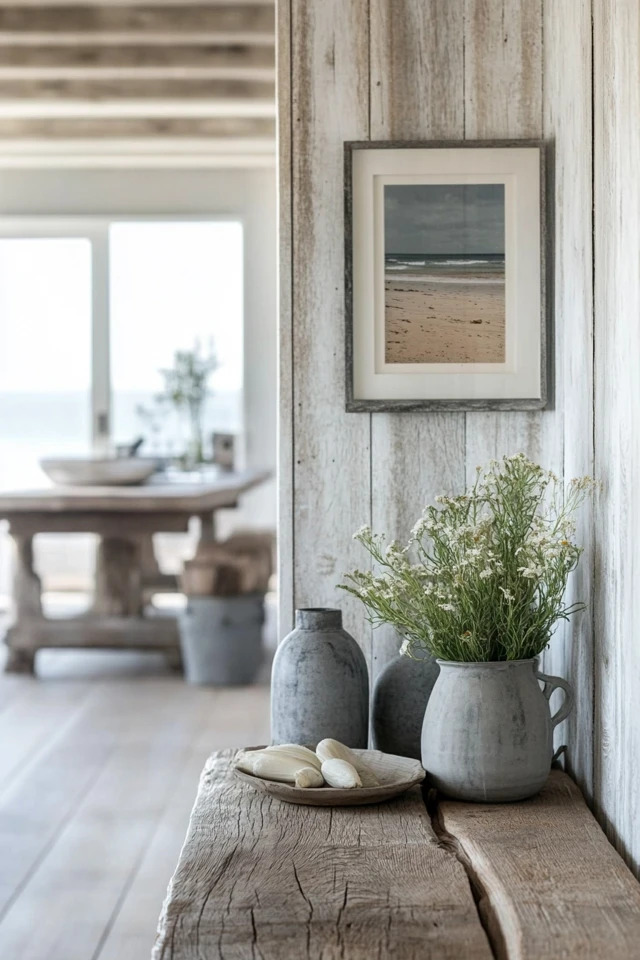
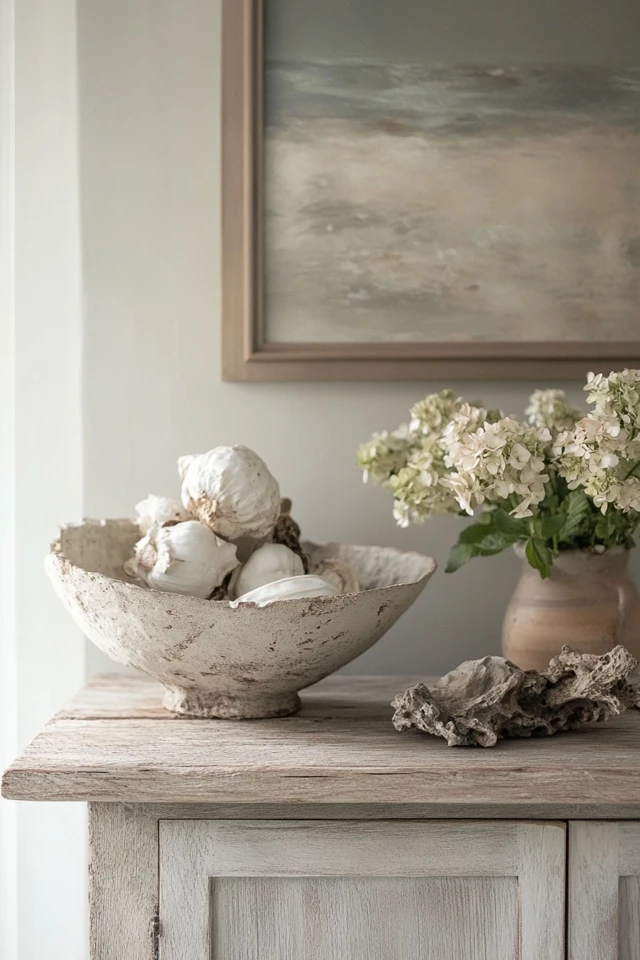
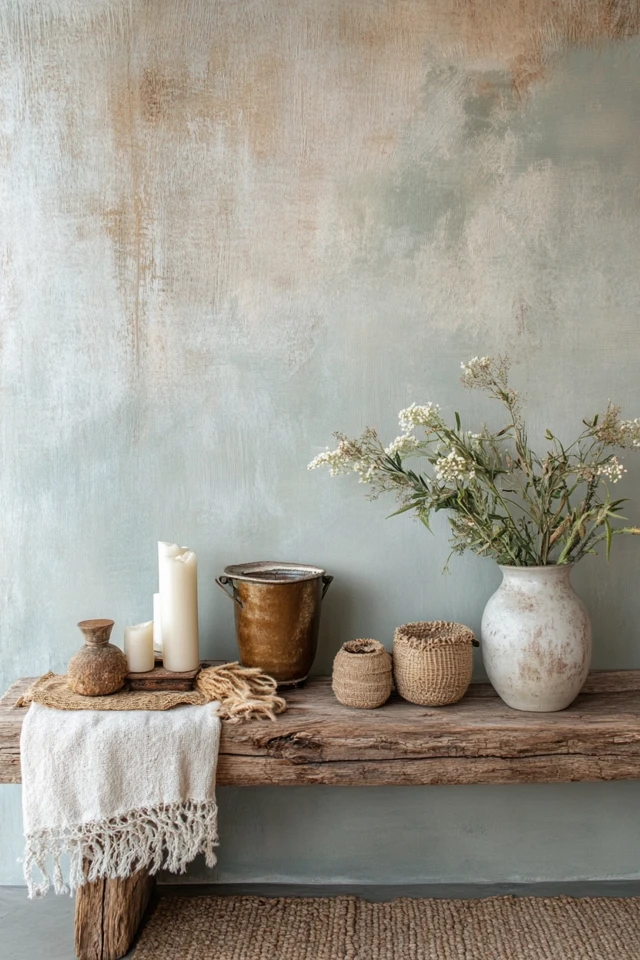
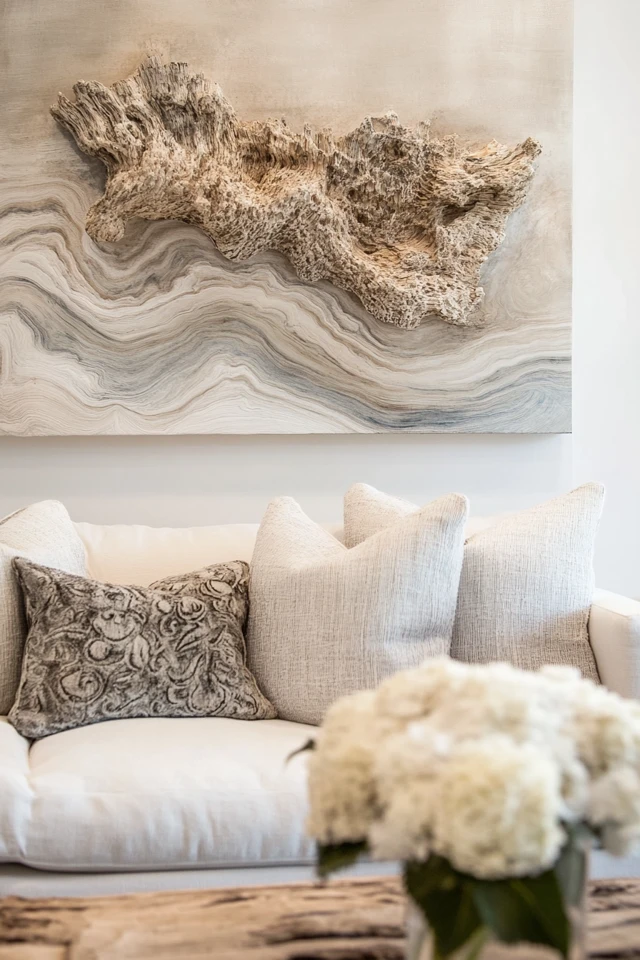
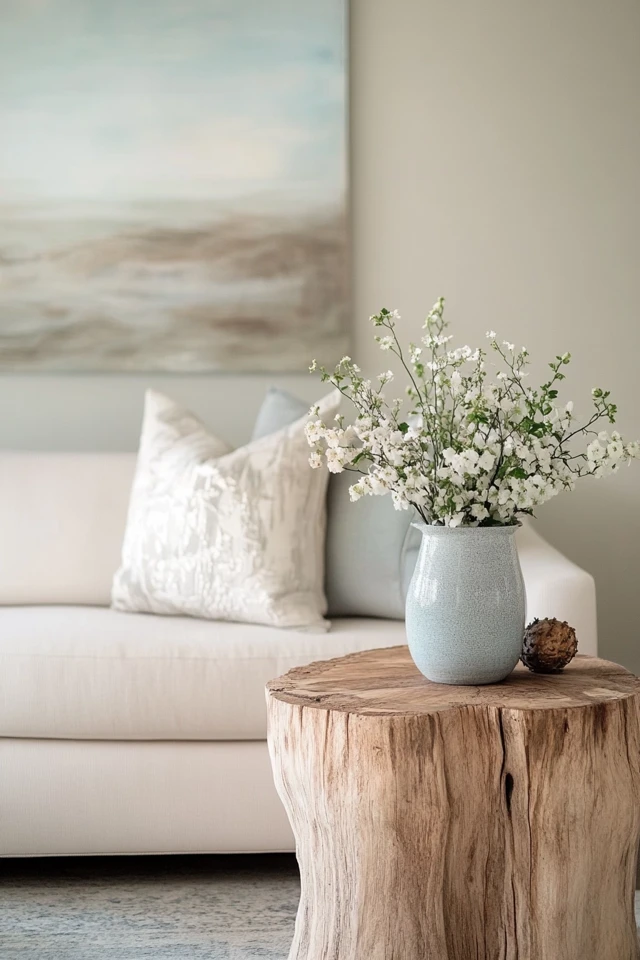
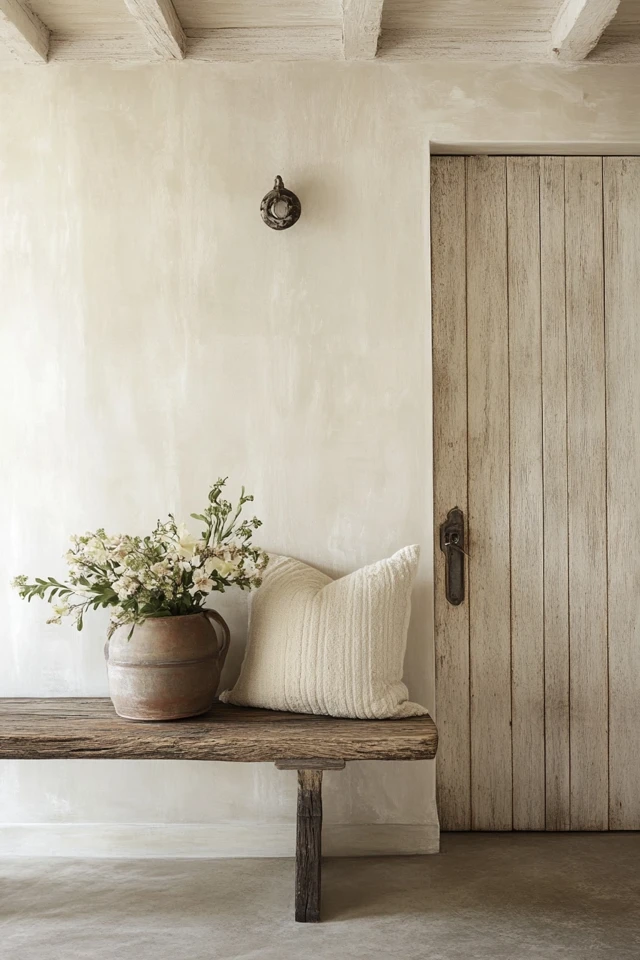
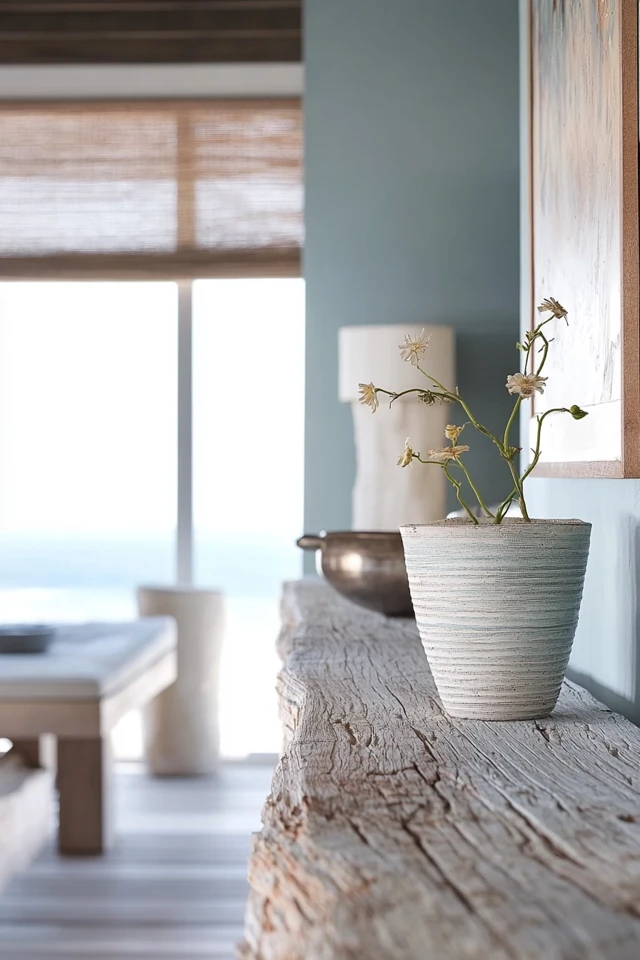

Why Texture Matters in Coastal Design
Textures are a cornerstone of coastal design because they bring a tactile, lived-in quality to the space. Here’s why they work so well:
- Adds Depth: Layering textures creates visual and physical depth, making the space feel more dynamic and interesting.
- Enhances Warmth: Natural materials like wood, jute, and linen add warmth and softness, balancing the cool tones often found in coastal color palettes.
- Connects to Nature: Organic textures evoke the feel of the beach and ocean, reinforcing the connection to nature that defines coastal design.
- Creates Balance: Mixing smooth, rough, soft, and shiny textures creates harmony in the space, preventing it from feeling one-dimensional.
- Timeless Appeal: Textures like rattan, linen, and driftwood have a classic, timeless quality that keeps your design feeling fresh and relevant.
How to Use Textures to Create Depth: 10 Coastal Ways
1. Layer Natural Textiles
Use soft, breathable fabrics like linen, cotton, and wool for upholstery, curtains, and bedding. These materials add softness and comfort while enhancing the breezy, relaxed feel of coastal design.
- Tip: Pair a linen duvet with a chunky knit blanket and smooth cotton sheets for a layered, inviting bed.
2. Incorporate Woven Materials
Add woven textures like rattan, seagrass, or wicker through furniture and decor. A rattan armchair, a seagrass basket, or a wicker pendant light brings warmth and dimension to the space.
3. Use Rough, Natural Finishes
Embrace materials with natural imperfections, like driftwood, reclaimed wood, or stone. A driftwood mirror or a reclaimed wood coffee table adds a raw, organic element that connects the space to the coast.
4. Add Plush Rugs and Carpets
Anchor the room with a textured rug, like a jute or sisal rug for a natural look or a plush wool rug for added coziness. Layering rugs can also create depth – try placing a smaller patterned rug on top of a larger neutral one.
5. Incorporate Shiny and Smooth Accents
Balance rough textures with smooth and shiny elements like ceramic vases, glass decor, or polished brass hardware. These accents reflect light and add a touch of elegance to the space.
6. Play with Patterns in Textiles
Use subtle patterns like stripes, geometrics, or botanical prints in throw pillows, curtains, or upholstered furniture. Patterns create visual interest and add a layered look without overwhelming the design.
7. Layer Furniture Finishes
Combine different furniture textures, like a smooth wooden dining table with woven rattan chairs or a sleek upholstered sofa with a rustic coffee table. This contrast creates balance and depth.
8. Bring in Organic Decor
Decorate with natural textures like seashells, coral, and driftwood. These elements add a tactile quality to shelves and tables while reinforcing the coastal theme.
9. Add Greenery for Life and Texture
Incorporate plants like potted palms, fiddle-leaf figs, or succulents to add a fresh, organic layer to your space. Use woven baskets or ceramic pots for an extra touch of texture.
10. Use Textured Wall Treatments
Add depth to your walls with textured finishes like shiplap, beadboard, or grasscloth wallpaper. These treatments create subtle dimension and enhance the coastal aesthetic.
FAQ Section
1. How do I balance different textures in a coastal space?
Stick to a cohesive color palette and focus on layering complementary textures. For example, pair smooth surfaces like glass or ceramics with rougher textures like rattan or jute.
2. Can I use bold patterns with coastal textures?
Yes! Use bold patterns sparingly, like on a single piece of furniture or a few throw pillows, and balance them with neutral tones and natural materials.
3. How do I keep a textured space from feeling cluttered?
Choose a few key pieces to highlight texture, like a woven rug or a driftwood coffee table, and keep the rest of the decor minimal. Use a consistent color palette to maintain a clean, cohesive look.
4. What’s the best way to add texture to a small space?
Focus on lightweight textures like linen curtains, a jute rug, or a rattan chair. These elements add depth without overwhelming the room.
5. Can I mix modern design with coastal textures?
Absolutely! Combine sleek, modern furniture with natural textures for a fresh, contemporary take on coastal design. For example, pair a minimalist sofa with a woven rattan side table.
Variations
- Minimalist Coastal Texture: Use a monochromatic palette with subtle textures like smooth linen and sleek glass for a clean, understated look.
- Boho Coastal Texture: Layer colorful, eclectic textiles and woven elements like macramé wall hangings for a relaxed, bohemian vibe.
- Rustic Coastal Texture: Emphasize rougher textures like weathered wood and galvanized metal for a farmhouse-inspired coastal look.
- Luxury Coastal Texture: Incorporate high-end materials like velvet, polished brass, and marble alongside natural textures for an upscale take.
- Outdoor Coastal Texture: Use outdoor-safe woven furniture, teak wood, and weather-resistant fabrics to create a textured, inviting outdoor retreat.
Conclusion
Texture is the unsung hero of coastal design, adding depth, warmth, and personality to your space. By layering natural materials, mixing finishes, and incorporating organic decor, you can create a coastal-inspired home that feels dynamic and inviting.
Whether you’re styling a cozy bedroom, a serene living room, or an outdoor lounge, these 10 ideas will help you master the art of texture and bring your coastal vision to life. Start small, experiment with layering, and let texture guide you toward a space that’s as beautiful as it is comfortable.
I’d love to see how you’ve used textures in your coastal-inspired space – share your photos and ideas, and let’s inspire each other to create homes that capture the depth and beauty of the coast!

